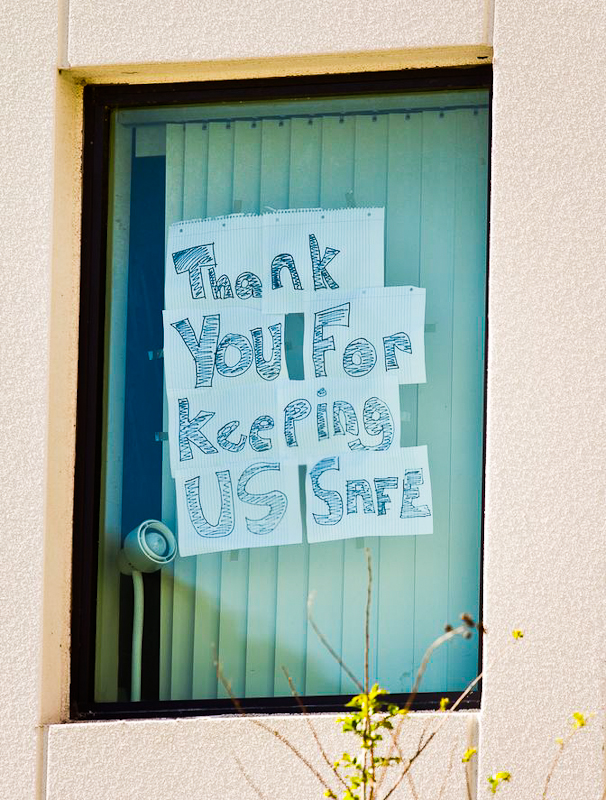
A shooting was narrowly avoided at the University of Central Florida (UCF) on March 18 when a student called police after his roommate brandished a gun.
Arabo Babakhani, 24, told university police that he was practicing guitar alone in his room when a fire alarm made him open his door to see what was going on, according to the university.
When he did, he came face-to-face with his roommate, James Oliver Seevakumaran, a 30-year-old business major, brandishing a submachine gun. Babakhani then proceeded to lock himself in his washroom and call 911.
While there, he told police that he had heard a “click or pop,” according to a police report. When police arrived at the dorm room, they found Seevakumaran’s body on the floor, with a single gunshot wound to the head, which they said they believe was self-inflicted.
Police said a note left by Seevakumaran detailed his plans to kill multiple people. It contained items like “Dress to go out, Go to [bar], get drunk,” which had all been crossed out. The last two items, “Pull alarm” and “Good luck and give them hell,” had not.
According to a statement made by UCF police chief Richard Beary, Seevakumaran had amassed an arsenal which included a .22 calibre fully automatic MP5 submachine gun with drum magazine and silencer, a .45 calibre handgun, hundreds of rounds of ammunition, and four homemade bombs which he intended to use on fellow students.
Police said they believe that Seevakumaran had planned to use the fire alarm to lure students into the open, where he could detonate explosives and fire upon them.
Documents released by the university show that Seevakumaran was being evicted from his room due to an unpaid account balance of over USD $7,000. He had been receiving messages from the university since August 2012. The university threatened to apply late fees and re-key his door. Seevakumaran had also failed to register for any classes in the winter term.
A statement from his family says that Seevakumaran “was a loner and did not have a history of violence.”
Babakhani described his roommate as an anti-social recluse, in an interview with UCF campus television show Knightly News.
“He always avoids eye contact. When I see him out and about he’d always walk around me instead of by me, or if he did walk by me, he would always stare off in another direction,” Babakhani said. “The only time he made solid eye contact with me was when he was holding the gun.”
In the weeks before his death, Seevakumaran had been trying to raise donations for people with autism. Emails provided by UCF show that he had created flyers, and was working with university employees to place a bin on residence where people could drop off items.
The residence assistants (RAs) in the dorms also keep records of some of their interactions with students. The most recent, dated Feb. 19, 2013, said that Seevakumaran had enjoyed a conversation with one of the RAs, and that he was “finding balancing work and school so easy now that he’s been doing it so long.”
Another, from Dec. 8, 2012, reported that an RA hadn’t had a chance to talk one-on-one with Seevakumaran, but had seen him around campus “always happy and with friends.”
It is unknown what motivated Seevakumaran, nor why he decided to take his own life, instead of carrying on with his alleged intentions.
The school has since put up posters warning students they will be kicked out of school, and have criminal charges laid against them if they are found with any weapons.
Five well-known school shootings in North America’s history
Bath School Disaster
May 18, 1927—Andrew Kehoe carries out deadliest school-based mass murder in North America’s history in Bath Township, Michigan. After killing his wife with a blunt object and burning down his farm (which the bank was foreclosing on) he took the lives of 38 elementary school children and 6 adults, before his own. A placard found wired to his fence read: “Criminals are made, not born.”
The Texas Tower Sniper
Aug. 1, 1966—Around lunch time on a hot and sunny Monday, former U.S. Marine Charles Whitman climbs the tower at the University of Texas and randomly shoots 44 people, killing 11. Though his suicide note plans the prior murder of his mother and his pregnant wife, there is no mention of the shooting.
École Polytechnique Massacre
Dec. 6, 1989— After several months of planning, Marc Lépine uses an assault rifle and hunting knife to murder 14 women and wound 10 more. In one classroom he took pains to separate the women and men before executing the women and four men. He claimed that feminism had ruined his life.
Virginia Tech Massacre
April 16, 2007—Korean Student Seung-Hui Cho kills 32 people and wounds 17 others. Due to Cho’s psychological issues, Virginia’s gun laws came under scrutiny, and are eventually overhauled to prevent people with psychological issues from acquiring weapons. The massacre elicits the first federal gun control measure in more than 13 years.
Sandy Hook Elementary
Dec. 14, 2012—Adam Lanza arrived at the elementary school his mother worked at some time in the early morning. As the announcements played over the loudspeaker, he began a spree which would take the lives of five teachers and 22 first-grade students. His mother was found later with four gunshot wounds to the head.





